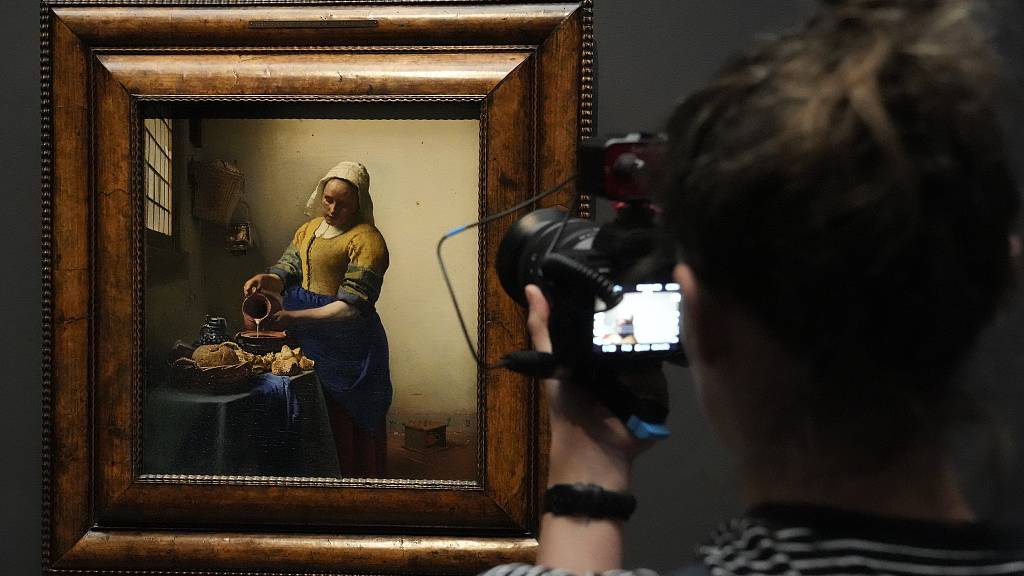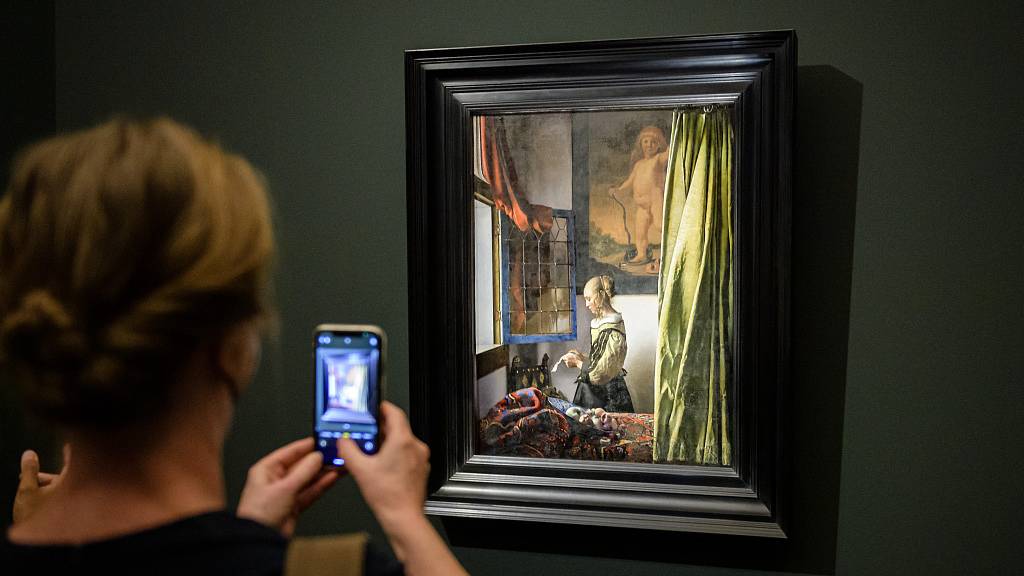
Vermeer's The Milkmaid being filmed at Amsterdam's Rijksmuseum. Could films showing artwork rival the experience of visiting exhibitions in person? /Peter Dejong/CFP
Vermeer's The Milkmaid being filmed at Amsterdam's Rijksmuseum. Could films showing artwork rival the experience of visiting exhibitions in person? /Peter Dejong/CFP
The Super Mario Bros Movie last week became the first film of 2023 to gross $1 billion at the box office, with biographical sports drama film Air, directed by Ben Affleck, close behind.
Yet in the UK it's a documentary showing fewer than 30 of a 17th-century painter's works, accompanied by an audio tour, that's currently selling out cinemas nationwide.
Vermeer: The Greatest Exhibition is a 90-minute documentary dedicated to Dutch painter Johannes Vermeer. Hardly 'box office smash' material, you might think.
But 310 UK cinemas are currently listing the film, after initial screenings sold out within days. That's more UK cinema screens than any previous art film has managed.
READ MORE
Ai-Da: The robot stealing the limelight at the Venice Biennale exhibition
Bridge Builders: James Trapp. The translator and educator whose love of China began with an exhibition in his teens
China's largest Gandhara art exhibition unveiled at Palace Museum
The artist, who died aged 43 in 1675, was already breaking records when a retrospective showcasing 28 of his 37 known works went on display this spring at Amsterdam's Rijksmuseum, selling 450,000 tickets in just two days.
Now, Vermeer: The Greatest Exhibition, directed by David Bickerstaff, is proving similarly popular. It's currently being shown in more than 50 countries.
Produced by film company Exhibition on Screen, the movie consists of an intimate view of the exhibition, accompanied by commentary from the Rijksmuseum director and the show's curators.

A visitor photographs Vermeer's Girl Reading a Letter at an Open Window at a 2021 exhibition in Dresden, Germany. /Jens Schlüter/ Pool/Getty Images.
A visitor photographs Vermeer's Girl Reading a Letter at an Open Window at a 2021 exhibition in Dresden, Germany. /Jens Schlüter/ Pool/Getty Images.
But why is it proving so popular? Chloe Ashby, culture writer for The Times newspaper, believes the film's slow pace is key to its success.
She told BBC Radio 4's Today show: "Unlike so many art documentaries out there, with this Vermeer film the brilliant thing is it gives you the time and space to look at the works…it really feels like you are there by yourself. It's almost better than a private view and there is time for you to linger and loiter in front of the works."
So, could this preface a new trend? And can watching films of exhibitions really rival the experience of attending such shows in person?
Ashby thinks the answer to both questions might be yes, describing her viewing of the film as an unusually "intimate experience." She explained: "In the galleries you will be elbowing people to get to the works (whereas watching the film) you're not peering over someone taking a photo on their mobile phone."
Anyone who has traveled to The Louvre in Paris and failed to get within 10 meters of the Mona Lisa while hordes of tourists take selfies might agree.
Both the film and exhibition include Vermeer's most famous masterpieces, such as Girl with a Pearl Earring, The Geographer and The Milkmaid. It's also the first time the newly restored Girl Reading a Letter at the Open Window has gone on display.
Although he painted during the baroque period, Vermeer's work displayed domestic interior scenes of middle-class life with a quiet clarity that only became widely appreciated long after his death – it was not until the late 19th Century that his work became well-known. By 1672 he was in financial trouble and died insolvent three years later, leaving his wife and children destitute.
Subscribe to Storyboard: A weekly newsletter bringing you the best of CGTN every Friday